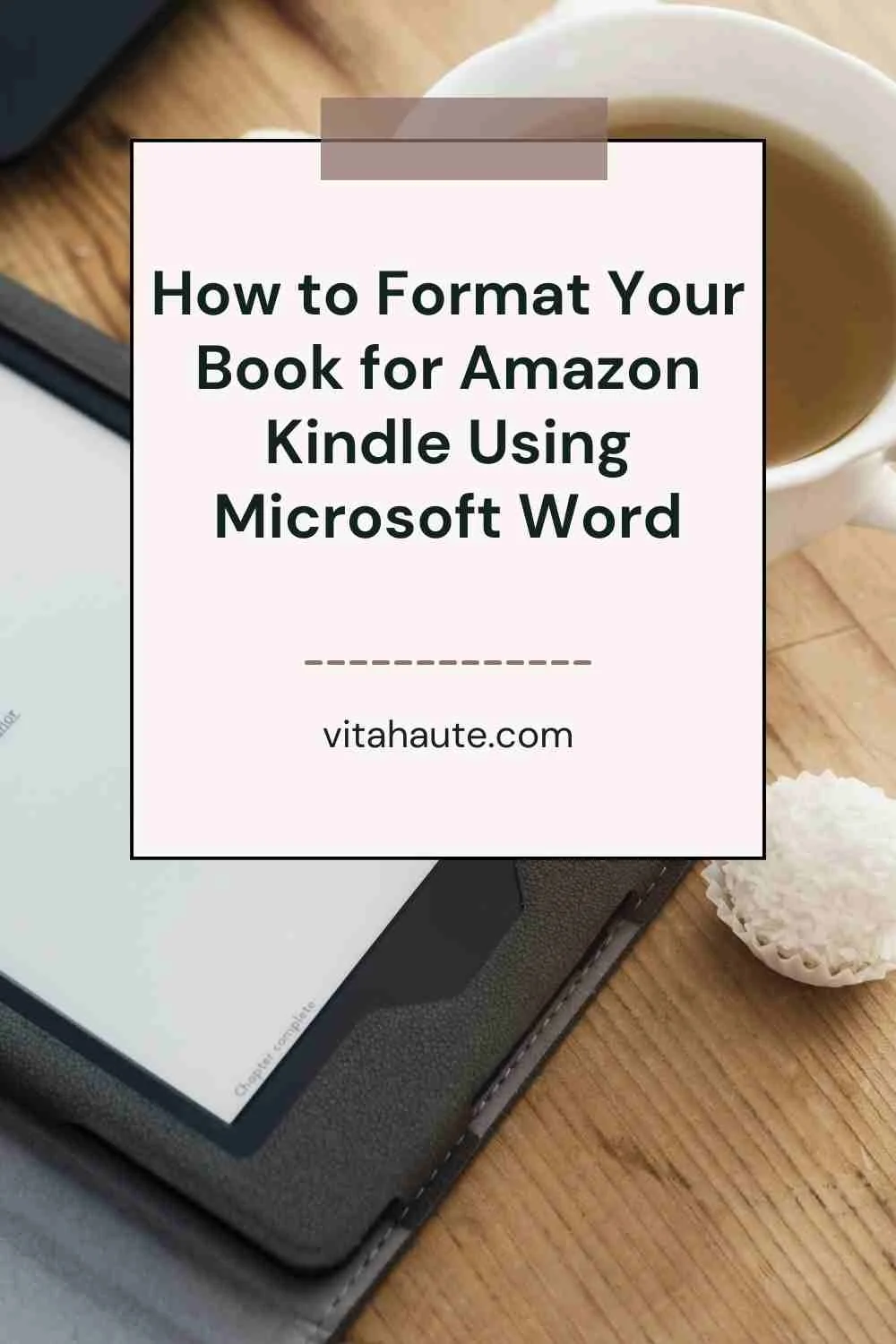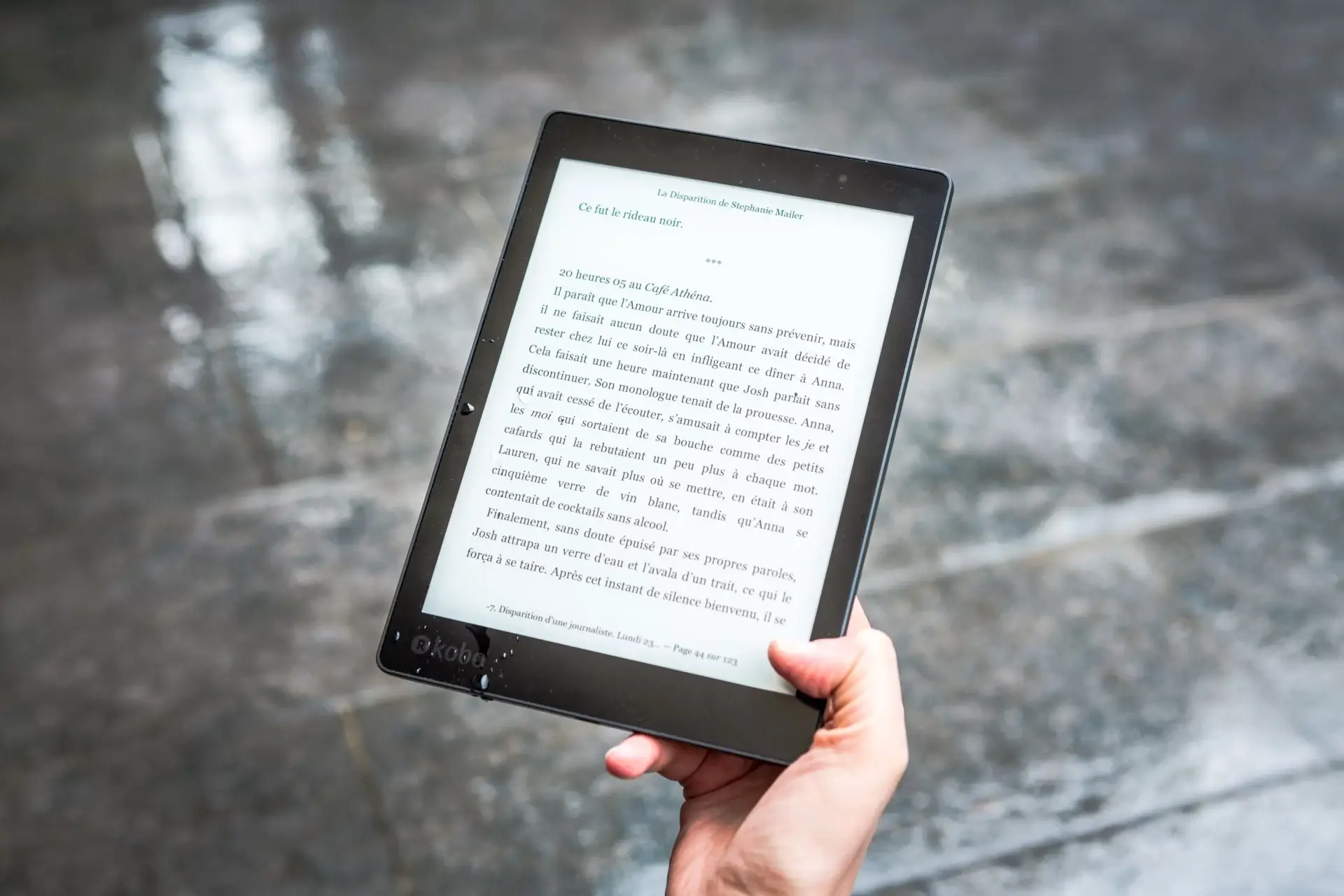This post contains affiliate links. Please read our disclosure.
Are you an aspiring author with a compelling story to tell, or valuable knowledge to share? The digital age has opened up incredible opportunities for writers, allowing you to publish your work with ease and reach readers worldwide. One of the most popular platforms for self-publishing eBooks is Amazon Kindle Direct Publishing (KDP). But here’s the catch: to ensure your eBook shines on Kindle devices and apps, it needs to be properly formatted.
In our guide, we’ll demystify the art of eBook formatting for Amazon, equipping you with the knowledge and confidence to format your eBook like a pro. You’ll learn how to make your eBook shine on all Kindle devices and apps, ensuring your literary masterpiece stands out in the crowded digital marketplace.
[Before we continue, if your book has fancy fonts, charts, and other graphics, then this tutorial is not for you.]

About Amazon Kindle Direct Publishing (KDP)
Amazon Kindle Direct Publishing (KDP) has revolutionized the world of publishing for authors. This program offers a platform for writers to independently publish their books in digital format, making them accessible to readers on Amazon Kindle devices and apps worldwide. Since its inception, KDP has experienced significant growth, with millions of authors using it to share their stories and expertise.
KDP also provides authors with the opportunity to earn royalties on their book sales. With the Kindle Unlimited and Kindle Owners’ Lending Library programs, authors can further expand their earning potential. In November 2025, the KDP Select Global Fund amounted to an impressive $58.2 million, emphasizing the program’s commitment to rewarding authors for their contributions. This strong financial incentive, combined with Amazon’s vast reader base, continues to attract writers seeking creative freedom and meaningful reach.
Today, Amazon KDP stands as a powerhouse in the self-publishing industry, boasting millions of eBooks and substantial earnings for authors. With its user-friendly platform and reliable royalty structure, it remains a top choice for writers looking to share their work with a global audience.
Amazon KDP eBook Formats: Supported File Types for Kindle
KDP allows authors to publish their books on Kindle devices and apps, but it requires specific file formats. Here are the primary options:
Microsoft Word (DOC/DOCX)
Microsoft Word files usually work well, but complex formatting can cause issues. You can use the Kindle Previewer tool to check your book’s appearance.
Kindle Package Format (KPF)
KPF works smoothly across all Kindle devices. You can create a KPF file using Kindle Create, a tool that helps improve your book’s appearance, add images, and preview it before publishing.
EPUB
If your book is in EPUB format and follows guidelines, Kindle can process it. Various third-party tools can create EPUB files, but it’s wise to validate the file using Kindle Previewer.
MOBI
MOBI format is suitable for specific book types, but for most books, EPUB, Word, or KPF is recommended. Old MOBI files with .prc extensions are no longer supported.
Additional formats such as HTML, Rich Text, Plain Text, and PDF are available, though each comes with its own limitations and formatting considerations.
The bottom line is that KDP offers several reliable formatting options to help your book display well on Kindle devices, giving you the flexibility to choose the format that best fits your project.
How to Format a Book for Kindle (KDP) Using Microsoft Word
Formatting your book for Amazon Kindle using Microsoft Word is an important step in your self-publishing journey. Follow these straightforward steps to help your eBook look professional on Kindle devices and apps:
1. Prepare Your Manuscript Before Formatting
Before beginning the formatting process, confirm that your manuscript is complete and thoroughly edited. It should be in Microsoft Word (DOC/DOCX) format.
Review your manuscript for spelling or grammar issues, and verify that your chapters are in the correct order. A well-prepared manuscript saves time during formatting.
Consider adding a title page with your book’s title and your author name, and remove any page numbers or headers/footers.
2. Set Page Size and Margins in Word
Open your manuscript in Microsoft Word and set the page size to 6×9 inches, which is a common Kindle eBook size. Adjust margins to 0.5 inches on all sides for a clean layout.
Kindle devices come in various sizes, so these settings provide a good balance for readability across different screens.
Confirm that your text is left-aligned for consistency and better eBook compatibility.
3. Use Styles for Headings, Chapters, and Body Text
Utilize Word’s “Styles” feature for consistent formatting throughout your book. Define styles for headings, paragraphs, and any special elements such as chapter titles.
Assigning styles makes it easier to maintain a uniform look and allows for quick changes if needed later in the process.
Apply consistent styling to your chapter headings so they remain distinct from the regular text.
4. Remove Extra or Hidden Formatting
Remove any unnecessary formatting from your text. This includes extra spaces, tabs, and special characters. Use Word’s “Find and Replace” function to handle this efficiently.
Excess formatting can cause issues during the eBook conversion process and may result in a messy layout on Kindle devices.
Look for hidden formatting marks and remove them to keep your eBook clean and professional.
5. Add a Linked Table of Contents (TOC)
Create an automatic table of contents (TOC) based on your defined styles. Kindle readers value an easily navigable TOC for moving between chapters and sections.
Link each chapter title in your TOC to the corresponding chapter in your eBook for readers’ convenience.
Update your TOC as you revise your manuscript, especially if you add or remove chapters.
6. Insert and Position Images Correctly
If your eBook includes images, use high-quality files and position them appropriately within the text. Use the “Insert Picture” feature in Word.
Place images close to the passages where they are referenced, selecting placements that support the reader’s understanding.
Use image captions sparingly, keeping their formatting consistent with the rest of your eBook.
7. Choose Readable Fonts and Consistent Formatting
Choose a readable font, such as Arial or Times New Roman, and keep font sizes consistent. Avoid decorative fonts that may not display well on Kindle devices.
Review the font color so it remains easy to read across different background settings, as Kindle devices allow users to customize their reading experience.
Keep text formatting simple, and avoid complex text boxes or columns that may not translate well to eBook format.
8. Save Your File as Web Page, Filtered (HTML)
Save your formatted manuscript as a Web Page, Filtered in Word. This format works well for Kindle conversion.
Confirm that all changes are saved, and consider creating a backup copy of your formatted manuscript before proceeding.
The filtered HTML format helps preserve your eBook’s structure during the conversion process.
9. Preview and Test Your eBook in Kindle Previewer
Use Amazon’s Kindle Previewer tool to review your eBook’s formatting. This step helps you identify potential issues before publishing.
Test your eBook on various devices and screen sizes to verify that it displays well across different viewing environments. Kindle Previewer provides a realistic view of how your eBook will appear to readers.
Pay attention to elements such as fonts, images, spacing, and the table of contents during the validation process, and adjust where needed.
10. Publish Your eBook on Amazon KDP
Sign in to your Amazon KDP account, create a new eBook listing, and upload your formatted manuscript. Follow the on-screen instructions to set pricing, select distribution options, and publish your eBook to the Kindle Store.
Review all details—including book cover, title, and book description—to confirm that your eBook is ready for readers.
Once published, your eBook will be available to Kindle users worldwide, giving you the opportunity to share your work with a global audience.
That’s it—your eBook is now ready to reach readers on Amazon Kindle. Congratulations on taking this important step in your publishing journey.
Last Updated on January 7, 2026
by Daniel Zohar

I’m an entrepreneur and digital marketing enthusiast who loves helping people grow—not just in affiliate marketing, but in all areas of online business. I enjoy showing others how to build a strong brand, create meaningful content, and use tools that make work easier. Over the years, I’ve learned what truly works in digital marketing, from creating websites that convert to building an engaged audience through email and social media. After more than ten years in the field, I’ve gathered plenty of lessons I enjoy sharing through my writing and talks. I use my own experiences to help others reach their goals and build something lasting. Besides running my business, I’m a fiction writer in the speculative genre, with dozens of short stories published in various magazines and anthologies. For eighteen years, I was a Top 10% Reviewer at Zoetrope, an online venue for creatives, where I helped members strengthen their writing. When I’m not working as a writer or marketer, you’ll probably find me cooking, reading, or watching a good baseball game. I live in New York City, where I was born and raised.
